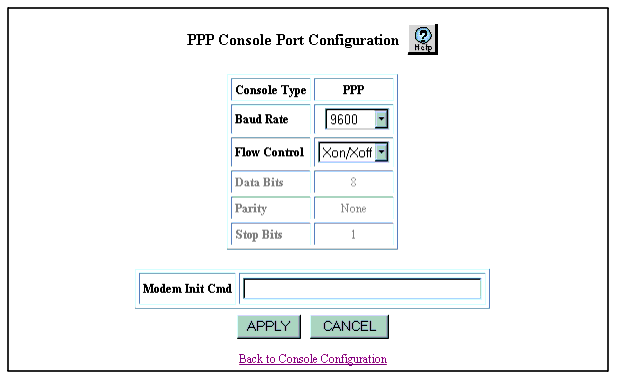|
|
|
To configure the console serial port as a PPP console from the Web Agent:
The Console Configuration Web page is displayed in the content pane. See Figure�17.
The Console Port Configuration Web page is displayed in the content pane and displays PPP for the Console Type (Figure�20).
Note: If you select PPP, the PPP Console Port Configuration Web page is displayed.
Figure�20:�PPP Console Configuration Web Page

Note: You can only change the baud rate and flow control parameters after you configure the serial port as a PPP console.
See Table�11 for a definition of the Modem Configuration Init command parameters.
Note: If you misconfigure the PPP serial console port, you can regain CLI access to correct the configuration parameters. For more information, see "Regaining Configuration Access to the PPP Serial Port Console" later in this chapter.
Tip: To successfully dial-in with PPP to the switch, you must also configure an IP address and interface for the PPP Serial Interface (Serial-Console). See "Managing Configuration Files," later in this chapter for more information.
Note: If you click Apply, the changes are saved in the running configuration only. The startup configuration has not changed. Therefore, these and other changes will be lost if your switch goes down or if you power it off. To save these changes, you must copy the running configuration to the startup configuration. See "Copying Configuration Files" later in this section.
|
|
|